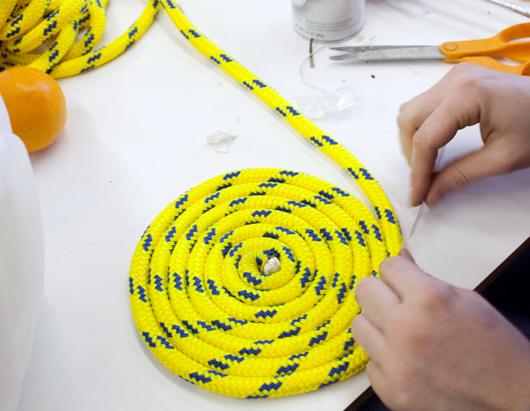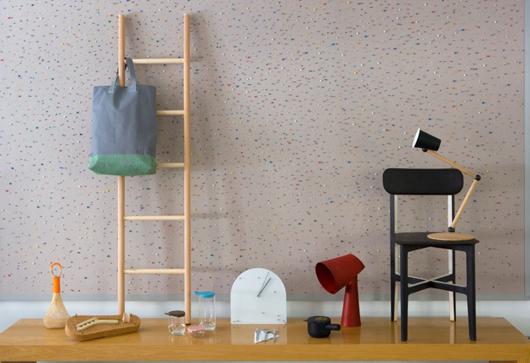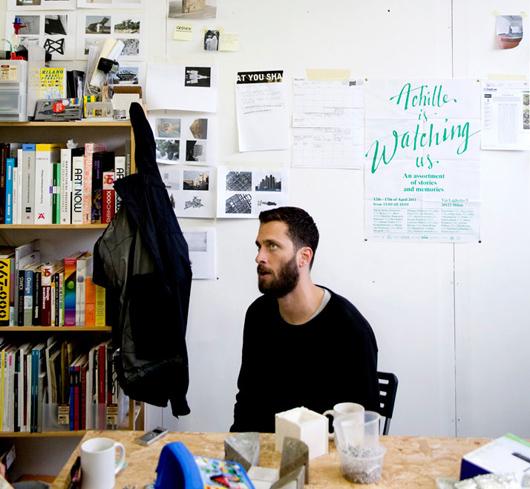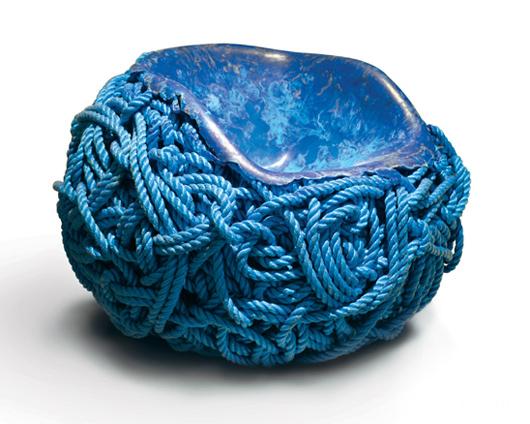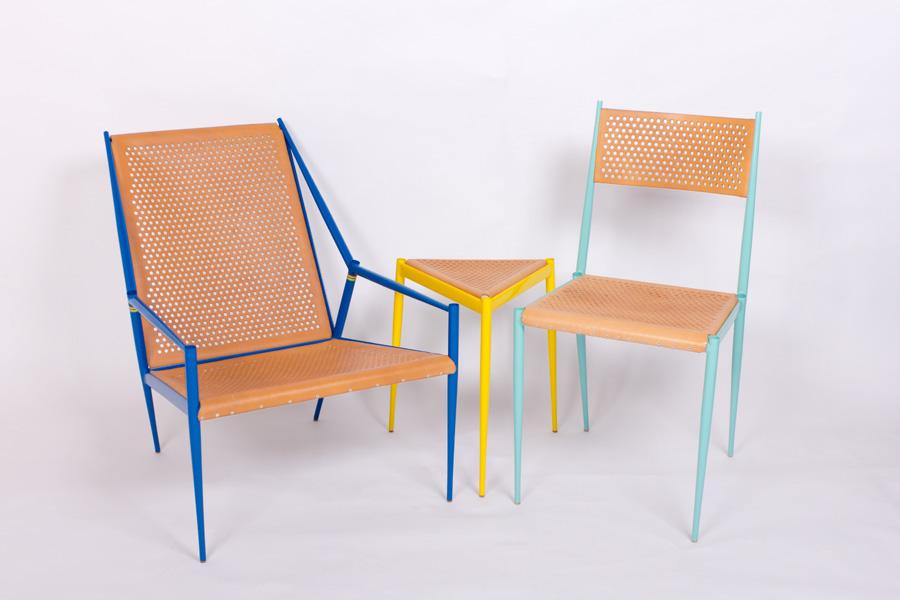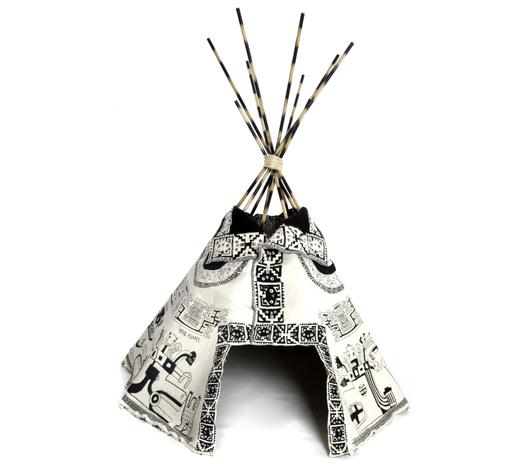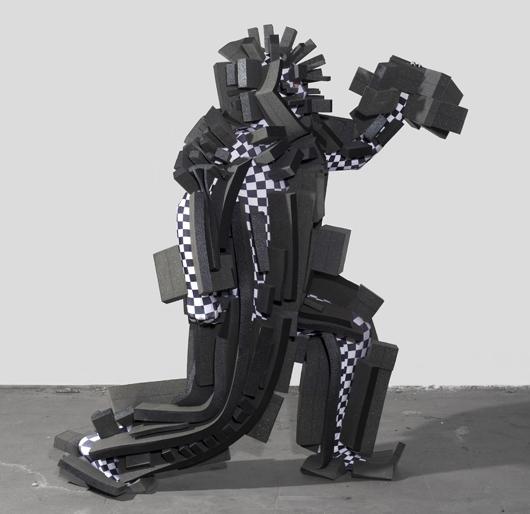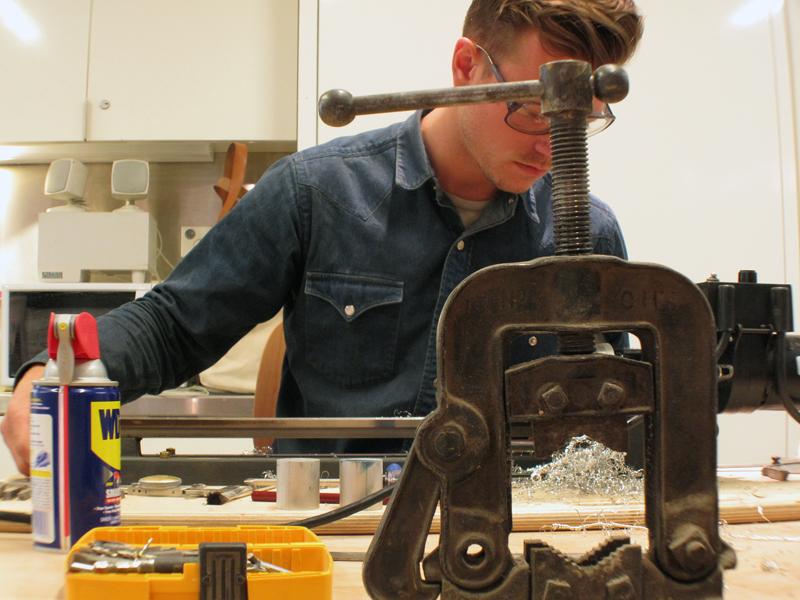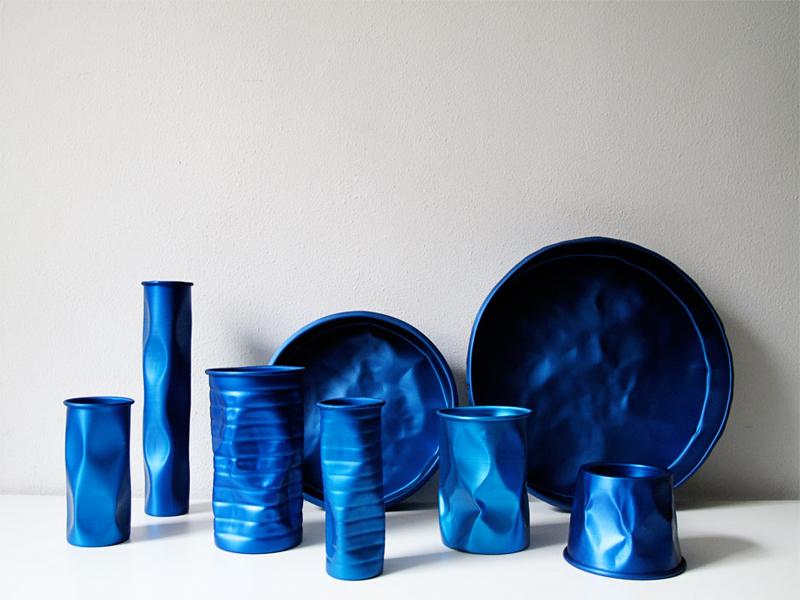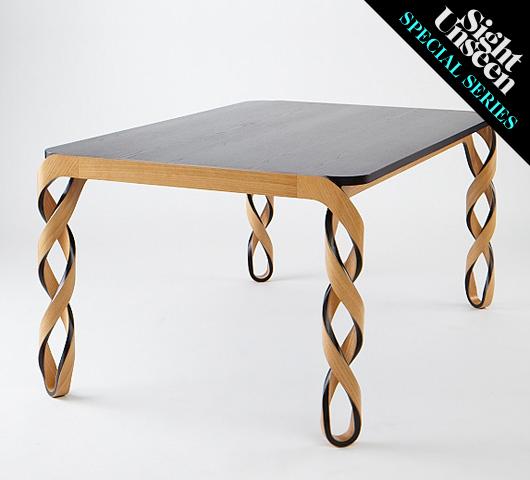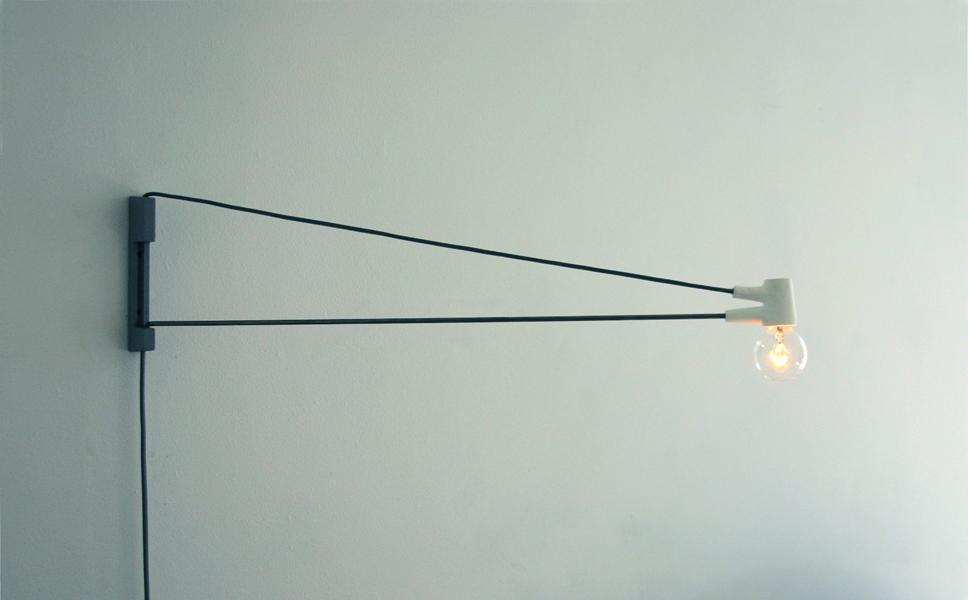
09.08.11
Up and Coming
Brendan Ravenhill, Furniture and Product Designer
Believe it or not, Los Angeles–based designer Brendan Ravenhill owes the success of his Cord Lamp, at least in part, to Etsy. It’s not that the designer spends his days hawking the spare, Prouvé-inspired insta-classic on the online crafters’ marketplace. But a few years ago, Ravenhill was coerced by his wife to participate in something she’d created on the site called Mail Order Pals. “It was basically a penpal for purchase," Ravenhill told me when I visited his Echo Park home and studio earlier this summer. "People could buy you in order to receive a letter or a surprise package in the mail.” After someone “bought” Ravenhill, he went to the hardware store and whipped up an elegantly simple wooden swing-arm lamp in one night. Upon seeing his creation, the designer’s wife convinced him it was just too nice to send. The penpal ended up getting a wire sculpture of a penguin, and the couple began living with the lamp. In the months that followed, Ravenhill became obsessed with the design, refining and tweaking it in his head to the point that by the time he was approached to create a piece to show with the American Design Club at a trade fair in New York, he was able to fashion a prototype in just one week. The final lamp — composed primarily of porcelain, cast aluminum, a cloth cord, and a bare bulb — packs and ships flat and sells for less than $200 at places like The Future Perfect, cementing the young designer’s status as a rising talent to watch.

